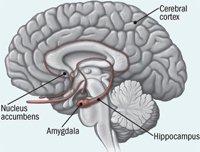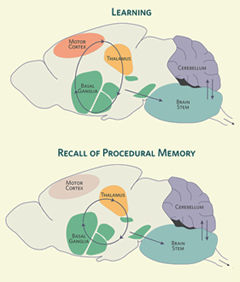Sunday, 25 September 2016
How Different Parts of the Brain Co-operate

Perhaps one of the hardest things to understand about the brain is the way that it is organized into networks. In this post, I will discuss a 2015 study, on the brain structures involved in delayed gratification, that makes this complex subject a bit easier to grasp. (more…)
Pleasure and Pain | Comments Closed
Wednesday, 7 September 2016
Motor cortex is required for learning but not for executing a motor skill

The motor cortex was long thought to be the part of the brain that controlled the body’s voluntary movements. Given the plasticity of the cortex as a whole, it seemed reasonable to believe that decisive changes in the connectivity of the neurons in the motor cortex might well be associated with motor learning. Although this may indeed be the case, a study published by Risa Kawai and colleagues in the journal Neuron in May 2015 forces us to reconsider the primacy of the motor cortex in learned sequences of movements, at least in rats. (more…)
Body Movement and the Brain | Comments Closed








